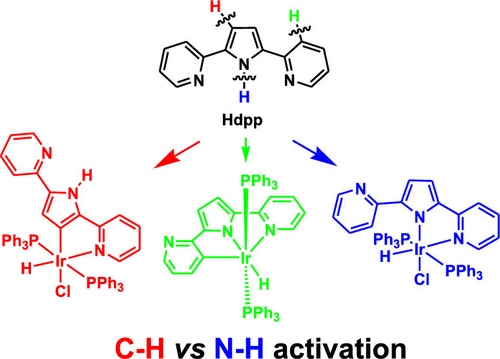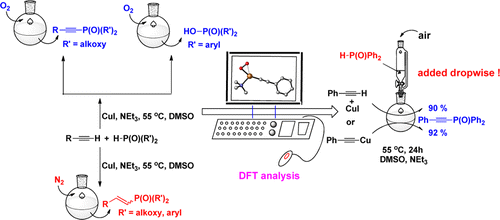Formation of Iridium(III) Complexes via Selective Activation of the C–H and N–H Bonds of a Dipyridylpyrrole Ligand
Submitted by Jun Zhu on Fri, 02/28/2020 - 11:02
Treatment of [Ir(PPh3)3Cl] with 2-[5-(pyridin-2-yl)-1H-pyrrol-2-yl]pyridine (Hdpp) in refluxing toluene affords an unexpected pyrrole-metalated iridium(III) hydride complex, [Ir(K2C,N-dpp)(H)(Cl)(PPh3)2] (1), via Cpyrrole–H activation, while the presence of the base KOtBu as the deprotonation reagent produces a pyridine-metalated iridium(III) hydride complex, [Ir(K3C,N,N-dpp)(H)(PPh3)2] (2), via Cpyridine–H activation.


